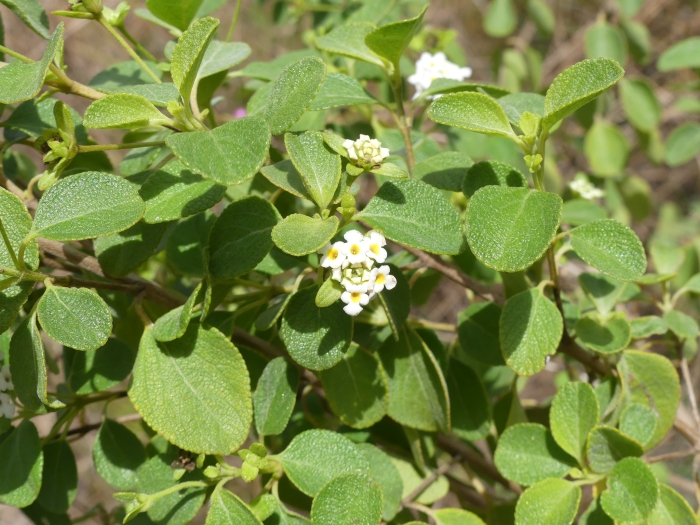Buttonsage
(Lantana involucrata)
Buttonsage (Lantana involucrata)
/
/

botanygirl
CC BY 4.0






















Estimated Native Range
Summary
Buttonsage is valued for its drought tolerance and wildlife-attracting qualities, making it a suitable choice for xeriscaping and naturalistic garden designs. It thrives in full sun to part shade and prefers well-drained soils, tolerating a range of soil types from sandy to loamy. While generally low-maintenance, it may require pruning to maintain its shape and can be susceptible to pests such as whiteflies and lantana lace bugs. In regions where it is non-native, Buttonsage can become invasive, so gardeners should be cautious and consider local regulations before planting.CC BY-SA 4.0
Plant Description
- Plant Type: Shrub
- Height: 3-5 feet
- Width: 1-5 feet
- Growth Rate: Moderate, Slow
- Flower Color: Purple, White, Yellow
- Flowering Season: Spring, Summer, Fall
- Leaf Retention: Evergreen, Semi-deciduous
Growth Requirements
- Sun: Full Sun
- Water: Low, Medium
- Drainage: Fast, Medium
Common Uses
Bird Garden, Butterfly Garden, Groundcover, Hummingbird Garden, Low Maintenance, Showy Flowers, Street Planting
Natural Habitat
native to coastal areas, dunes, and other well-drained sites in the Neotropical realm, including Mexico, the Caribbean, Central America, and South America
Other Names
Common Names: Wild Sage , Hammock Shrubverbena , Black Sage , Beishi Ros , Bush Tea , Bushurumbu , Bushurumu , Common Sage Bush
Scientific Names: Lantana involucrata , Camara involucrata , Lantana arubensis , Lantana incana , Lantana involucrata f. candida , Lantana involucrata f. leucocarpa , Lantana involucrata f. rubella , Lantana involucrata var. berlandieri , Lantana involucrata var. floridana , Lantana involucrata var. kuhnholtziana
GBIF Accepted Name: